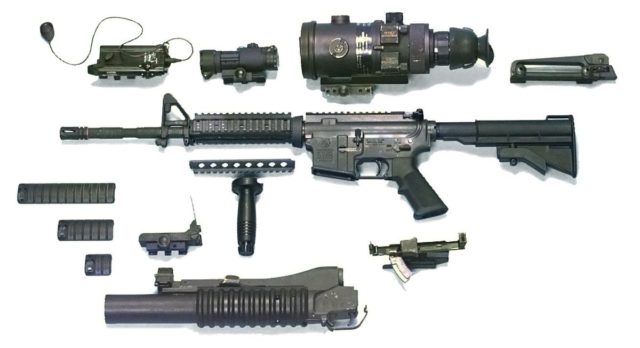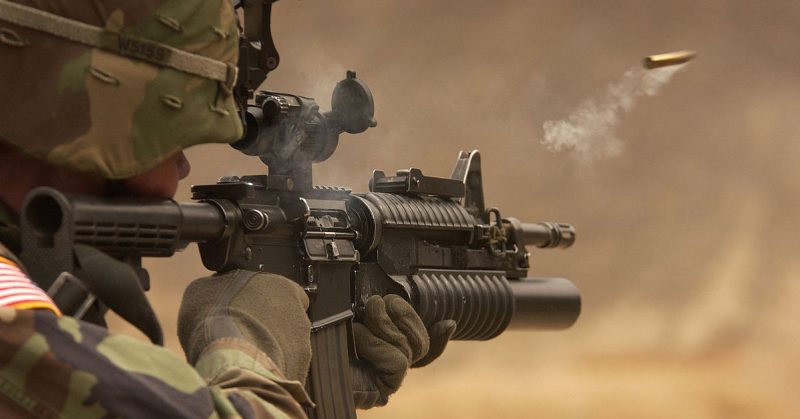The US Army is globally active. At all times, they are in action on several continents from arid deserts to tropical jungles to urban centers. The infantrymen of the army still carry the weapon that was introduced in Vietnam, but it has been improved steadily until it has become the weapon it is now. The M4 carbine is tough, easy to operate and accurate. It’s not just the Army that likes the M4; it is the standard infantry weapon of all the US ground forces.
In the early days of the Vietnam War, the Pentagon needed a small, light rifle to replace the M14. The Armalite Rifle-15 (AR15) was smaller and lighter and used a smaller bullet. A soldier could carry two times the ammunition for the AR15 (later designated the M16) as the M14. Also, mores soldiers were joining the service with no firearms experience, and the M16 had less recoil, making it easier to train soldiers to be proficient with it.
After early success, the M16 began to accumulate complaints. A change in propellant powder and a mistaken assumption that the M16 never needed cleaning led to jams in the field. The M16A1 fixed those problems in 1967, but the weapon was already suffering from a reputation for being unreliable. In the mid-1980s, the M16A1 was replaced with the A2 which had a thicker barrel plus a three round burst mode.
In the early 1990s, the Army bought a small number of M4 carbines. With its collapsible stock and shorter barrel, it was easier to carry in tight spaces like armored vehicles and helicopters. That shorter barrel gave the gun less velocity and range, but the tradeoffs were considered acceptable.
Hostilities in Iraq and Afghanistan have hastened the adoption of the M4. It is now carried by the majority of the US Army and Marine Corps. When loaded with a thirty-round magazine, the stock weapon weighs 7.3 pounds. The typical soldier will add on accessories like Aimpoint red dot sights, scopes, foregrips, even a grenade launcher. These additions can bring the weight up to over nine pounds. This is still lighter than the World War II-era M1 Garand rifle that weighed 11.2 pounds.

There are critics of the M4 who believe that the weapon is inadequate for current conditions. The direct impingement gas operating system is blamed for increasing the likelihood of jams. The bullet is considered too small to be effective. The barrel is considered too thin to avoid overheating.
Still, modern troops seem to approve of the weapon. In 2006, CNA Corporation took a survey of US Army combat veterans. 89% felt that the M4 was reliable. Only 19% had experienced it failing in battle. 80% were confident in the M4.
The Army is working on fixing the problems with the M4. The new M855A1 Enhanced Performance Round is designed to penetrate steel plate armor and cause massive damage in the body once through.
The M4 is in the process of being upgraded to the M4A1. The new standard features changing the three round burst mode to fully automatic, an improved trigger and a heavier barrel that will sustain longer firing before overheating. The new weapon is also designed to be used by either left- or right-handed soldiers. New rifles are currently being delivered according to the new standard. Older rifles are being upgraded at a rate of 300 a day, The National Interest reported.
Tradeoffs are a necessity. No weapon works ideally in every environment the US military finds itself in. The M4 is a good compromise.
